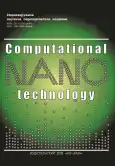Finding the Optimal Machine Learning Model for Flood Prediction on the Amur River
- Authors: Aleksandrov N.E.1, Ermakov D.N.1,2, Aziz N.M.1, Kazenkov O.Y.1,2,3
-
Affiliations:
- Engineering Academy of the Peoples’ Friendship University (RUDN University)
- Research Institute “Polyus” named after M.F. Stelmakh
- K.G. Razumovsky Moscow State University of Tehnologies and Management (the First Cossack University)
- Issue: Vol 9, No 2 (2022)
- Pages: 11-20
- Section: Articles
- URL: https://journals.eco-vector.com/2313-223X/article/view/529845
- DOI: https://doi.org/10.33693/2313-223X-2022-9-2-11-20
- ID: 529845
Cite item
Abstract
Full Text
About the authors
Nikita E. Aleksandrov
Engineering Academy of the Peoples’ Friendship University (RUDN University)
Email: 1042210208@pfur.ru
PhD Student Moscow, Russian Federation
Dmitrii N. Ermakov
Engineering Academy of the Peoples’ Friendship University (RUDN University); Research Institute “Polyus” named after M.F. Stelmakh
Email: dermakow@mail.ru
Dr. Sci. (Polit.), Dr. Sci. (Econ.), Cand. Sci. (Hist.), Professor, Master of Engineering; Professor at the Department of Innovation Management in Industries; leading researcher Moscow, Russian Federation
Naofal Mohamad Hassin Aziz Aziz
Engineering Academy of the Peoples’ Friendship University (RUDN University)
Email: 1042208064@rudn.ru
PhD Student Moscow, Russian Federation
Oleg Yu. Kazenkov
Engineering Academy of the Peoples’ Friendship University (RUDN University); Research Institute “Polyus” named after M.F. Stelmakh; K.G. Razumovsky Moscow State University of Tehnologies and Management (the First Cossack University)
Email: o.kazenkov@gmail.com
Honorary Worker of the Sphere of Education of the Russian Federation; assistant at the Department of Nanotechnology and Microsystem Technology; researcher at the Department for Research Activities; deputy Head Moscow, Russian Federation
References
- Arduino G., Reggiani P., Todini E. Recent advances in flood forecasting and flood risk assessment // Hydrology and Earth Sciences. 2005. Pp. 280-284.
- Aqil M., Kita I., Nishiyama S. Analysis and prediction of flow from local source in a river basin using a Neuro-fuzzy modeling tool // Journal of Environmental Management. 2007. Pp. 215-223.
- Carvalho D., Pereira E., Cardoso J. Machine learning interpretability: A survey on methods and metrics // Electronics. 2019. P. 832.
- Diederik P. Kingma Jimmy Ba Adam: A method for stochastic optimization // 3rd International Conference for Learning Representations. San Diego, 2015.
- DiFrancesco K.N., Tullos D.D. Flexibility in water resources management: Review of concepts and development of assessment measures for flood management systems // Journal of the American Water Resources Association. Pp. 1527-1539.
- Dipanjan Sarkar, Raghav Bali, Tushar Sharma. The Python machine learning ecosystem // Practical Machine Learning with Python. 2017. Pp. 67-118.
- Chang F.J., Hsu K., Chang L.C. Flood forecasting using machine learning methods. 2019.
- Makhinov А.N. Amur terrigene and chemical discharge formation // Proceedings of the International Kyoto Symposium. Kyoto, Japan: Research Institute for Hymanity and Nature, 2005. Pp. 61-65.
- Moore R.J., Bell V.A., Jones D.A. Forecasting for flood warning // Comptes Rendus Geosciences. 2005. Pp. 203-217.
- Nash J.E., Sutcliffe J.V. River flow forecasting through conceptual models. Part I: A discussion of principles // Journal of Hydrology. 1970. Pp. 282-290.
- Frumkin H. Disaster preparedness. In: Environmental health: From global to local. San Francisco: Jossey-Bass Publishers, 2005.
- Prokhorenkova L. et al. CatBoost: Unbiased boosting with categorical features // NIPS. 2017.
- Ramírez J.A. Prediction and modeling of flood hydrology and hydraulics. In: Inland flood hazards: Human, riparian and aquatic communities. Cambridge: Cambridge University Press, 2010.
- Rumelhart D.E., Hinton G.E., Williams R.J. Learning representations by back-propagating errors // Nature. 1986. No. 323. Pp. 533-536.
- Sahraei S., Asadzadeh M., Unduche F. Signature-based multi-modelling and multi-objective calibration of hydrologic models: Application in flood forecasting for Canadian Prairies // Journal of Hydrology. 2020. P. 588.
- Scikit-learn sklearn.linear_model.LinearRegression [Online]. 2022. URL: https://scikit-learn.org/stable/modules/generated/sklearn.linear_model.LinearRegression.html
- Tullos D. Assessing environmental impact assessments: A review and analysis of documenting environmental impacts of large dams // Journal of Environmental Management. 2008. Pp. 208-223.
- Vinod N., Geoffrey E. Hinton rectified linear units improve restricted Boltzmann machines // 27th International Conference on International Conference on Machine Learning [s.l.]. USA: Omnipress, 2010. Pp. 807-814.
- Big Data Academy MADE and hh.ru compiled a portrait of a Russian specialist in the field of Data Science. Vk, hh.ru. 2020. URL: https://vk.company/ru/press/releases/10682/
- Yoganath Adikari, Junichi Yoshitani. Global trends in water related disasters: An insight for policymakers. Tsukuba, Japan: International Centre for Water Hazard and Risk Management (UNESCO) (ICHARM), 2009.
- Demidenko E.Z. Linear and non-linear regression. Finance and Statistics. 1981. (In Rus.)
- Makhinov A.N., Kim V.I., Voronov B.A. Flooding in the Amur basin in 2013: Causes and consequences. Bulletin of the Far Eastern Branch of the Russian Academy of Sciences. 2013. (In Rus.)
- Novorotsky P.V. Fluctuations in the Amur runoff over the past 110 years. Geography and Natural Resources. 2007. Pp. 86-90. (In Rus.)
- Osipov Yu.S. Neural network. In: Great Russian Encyclopedia. 2017.
- Sberbank NoFloodWithAI: Forecasting floods on the Amur River. 2020. URL: https://github.com/sberbank-ai/no_flood_with_ai_aij2020
Supplementary files








